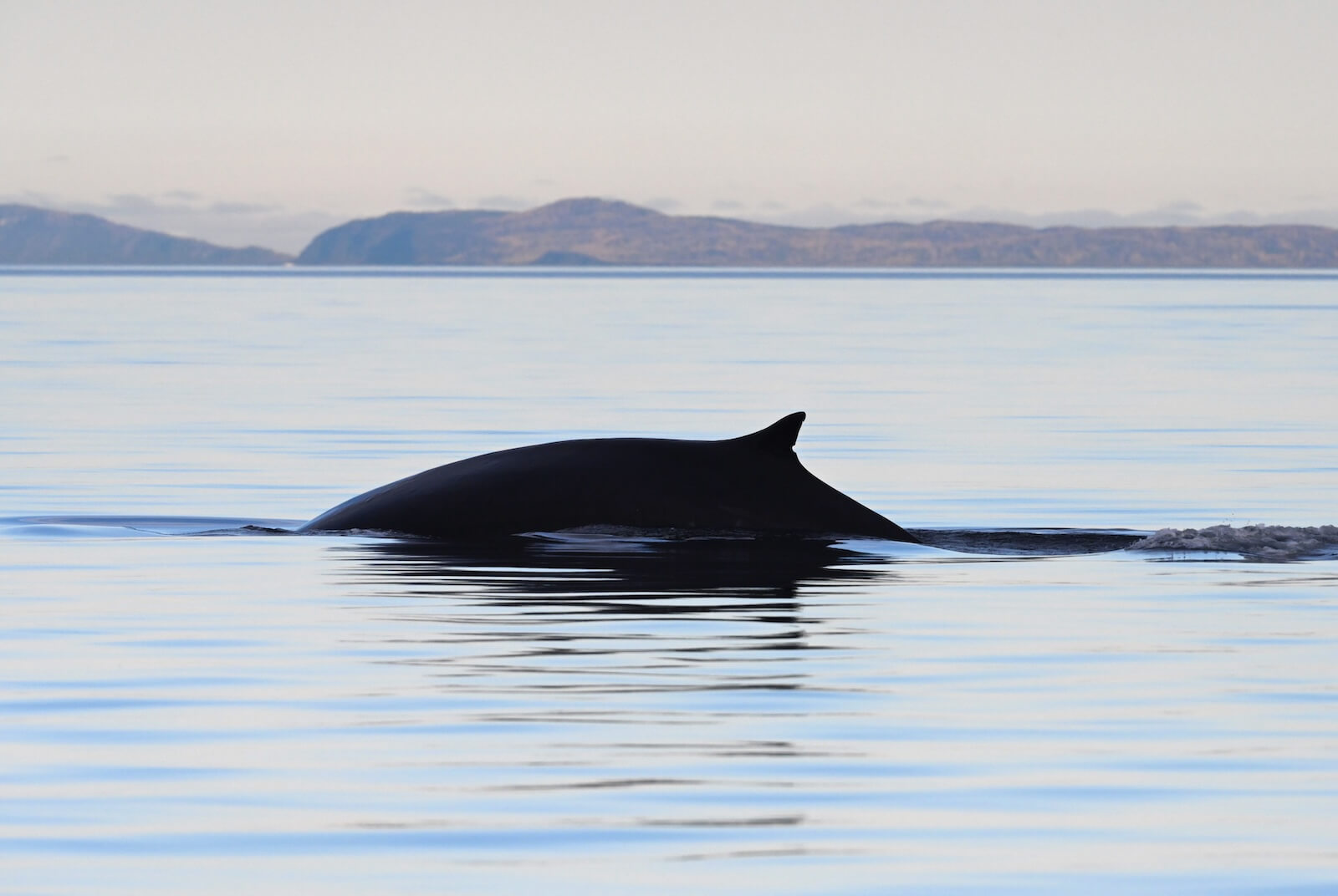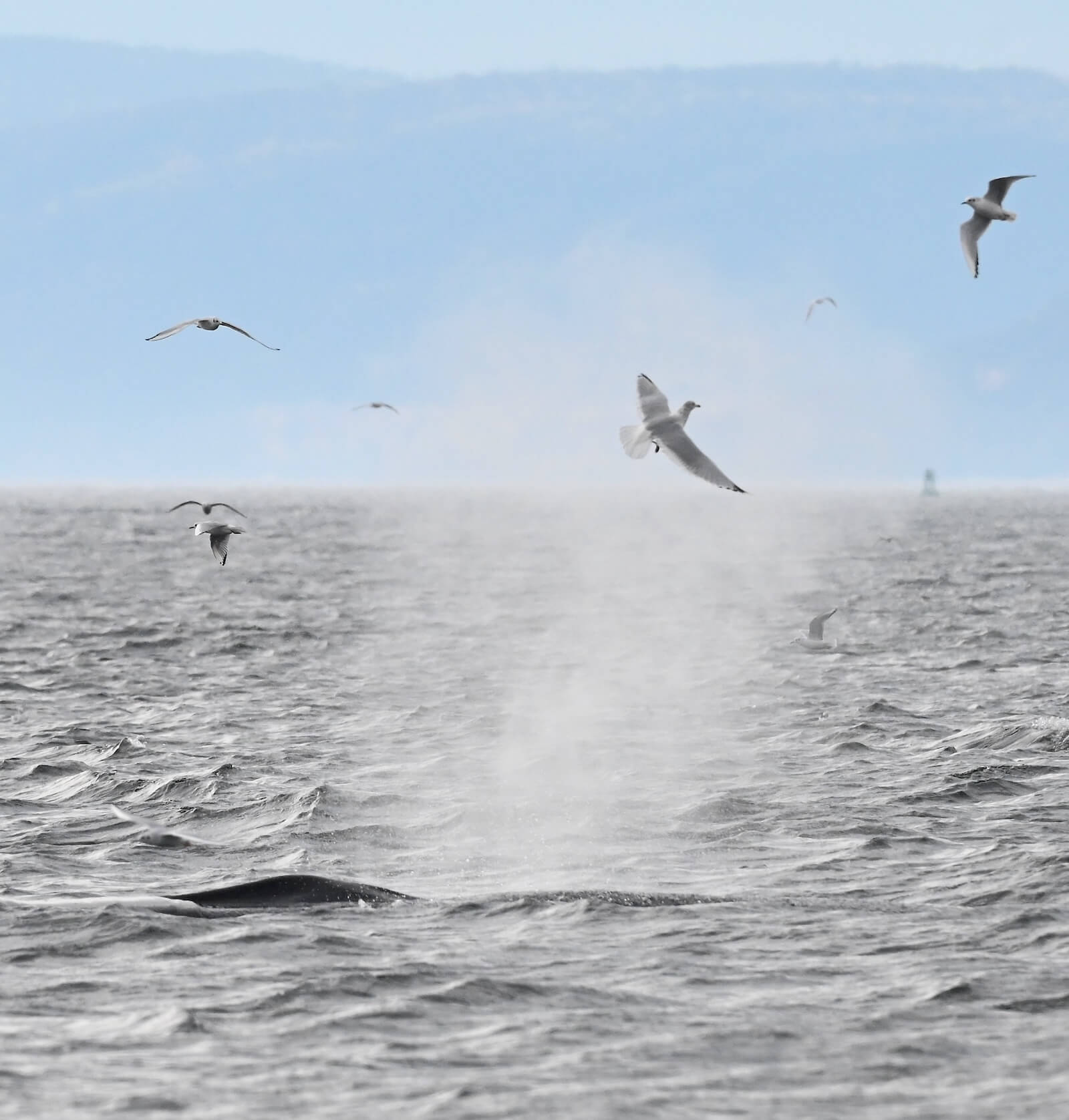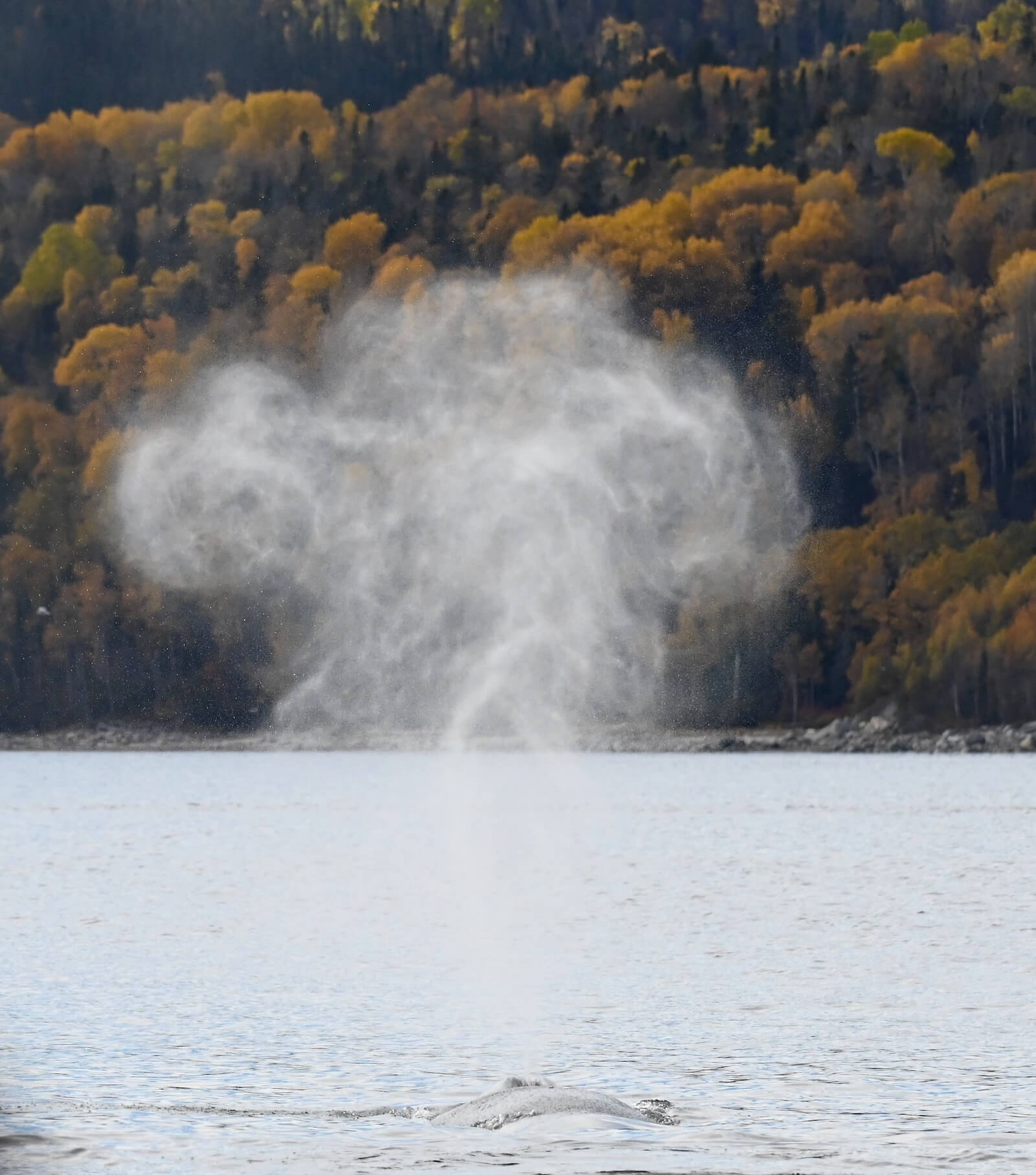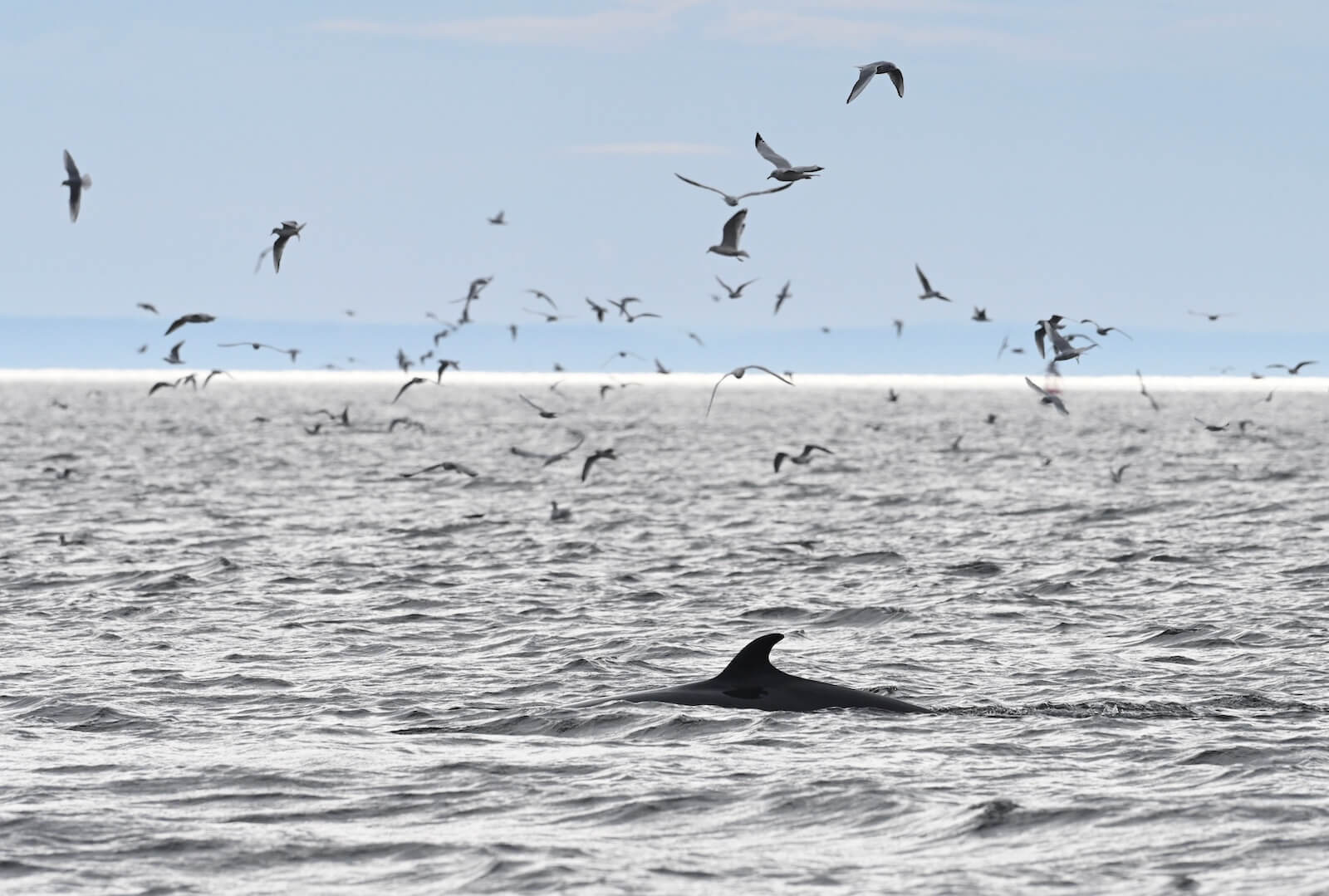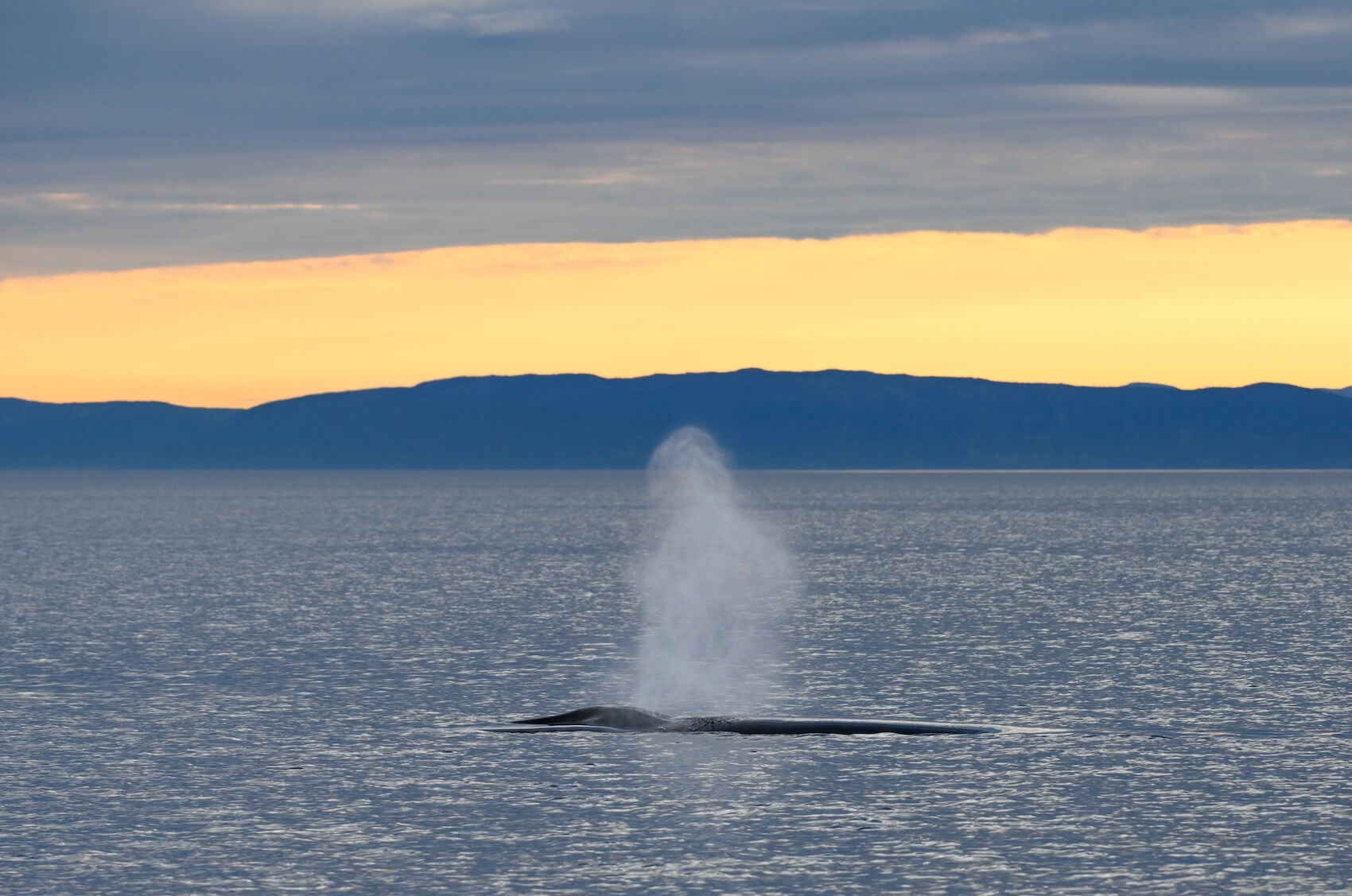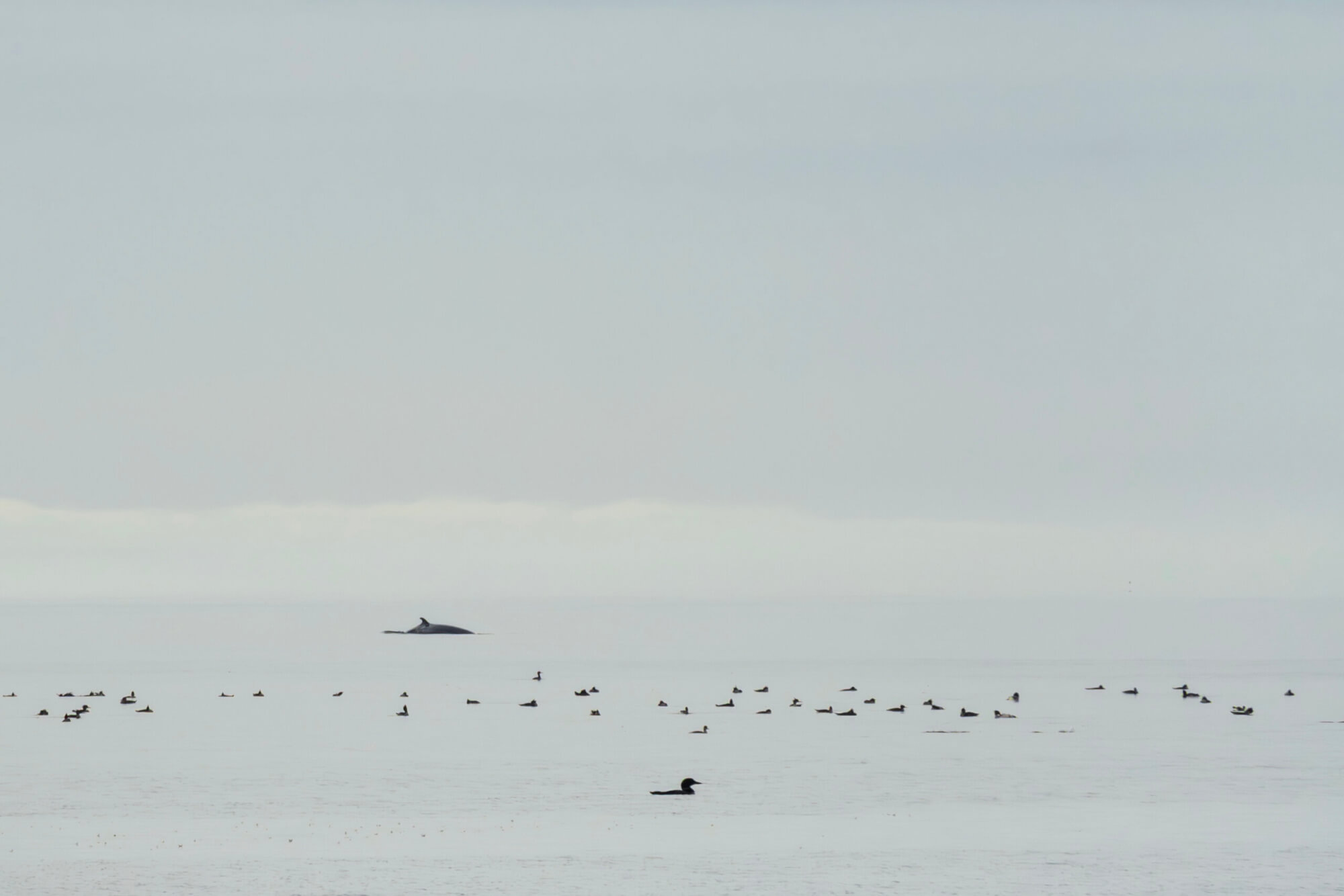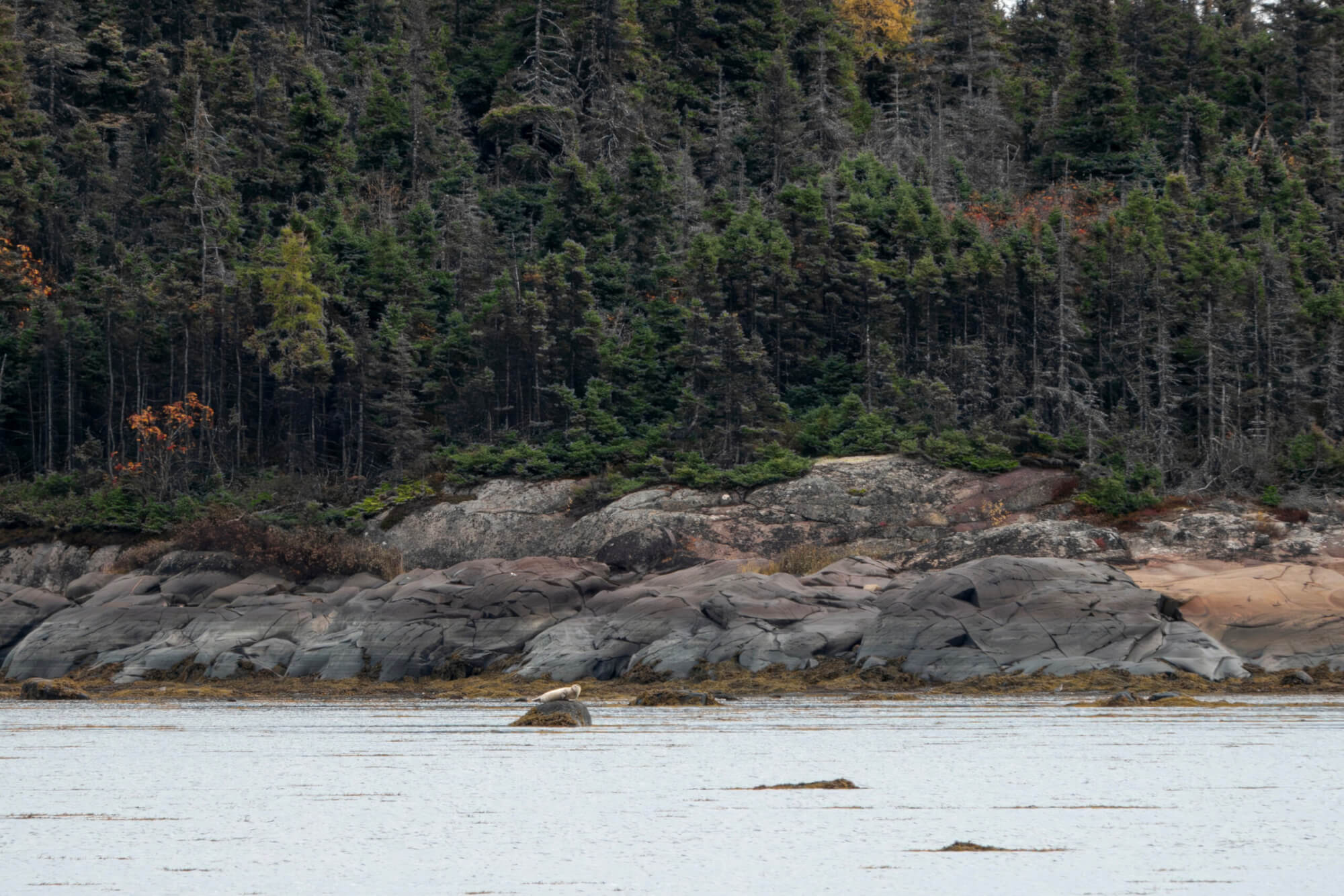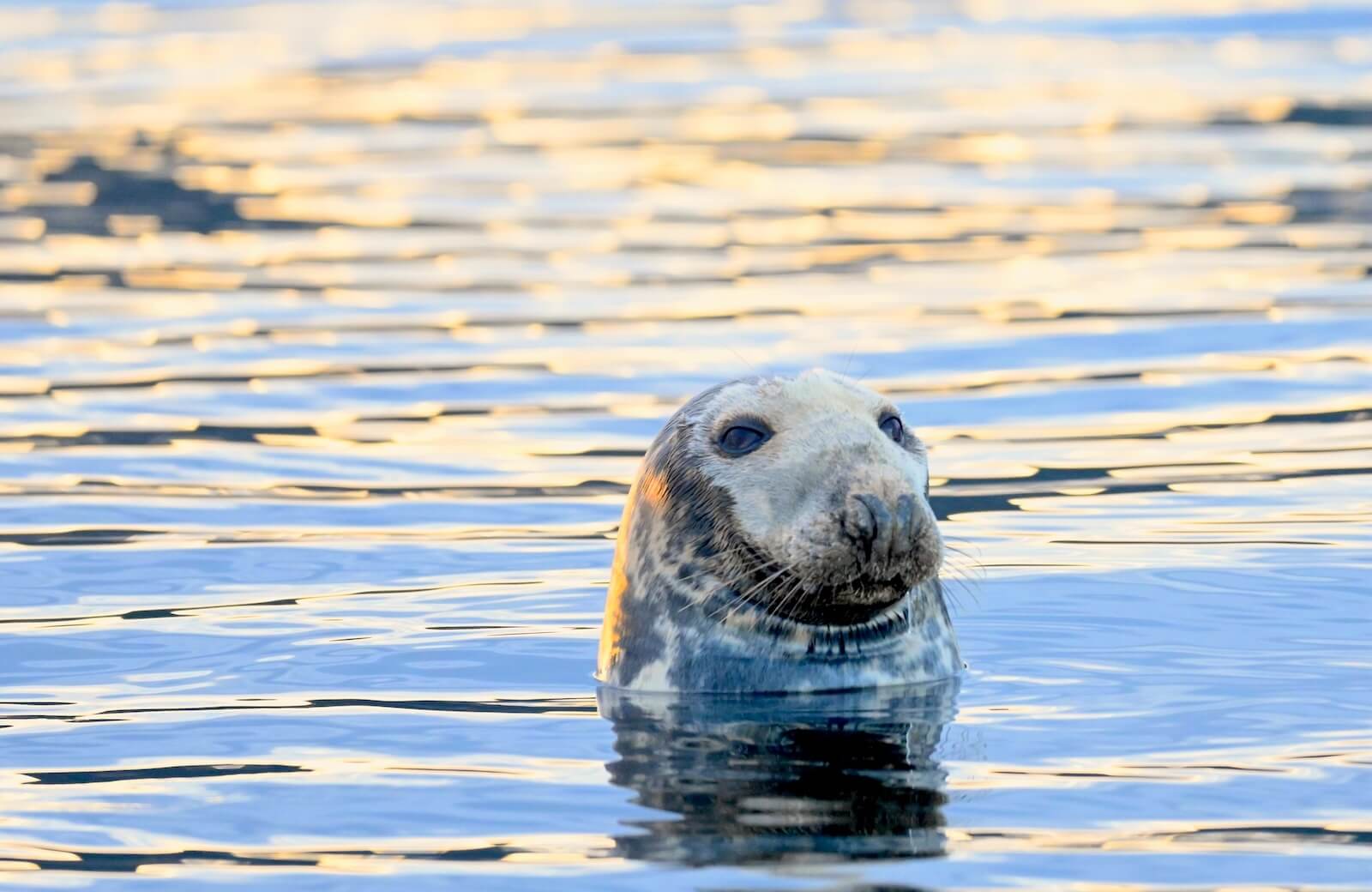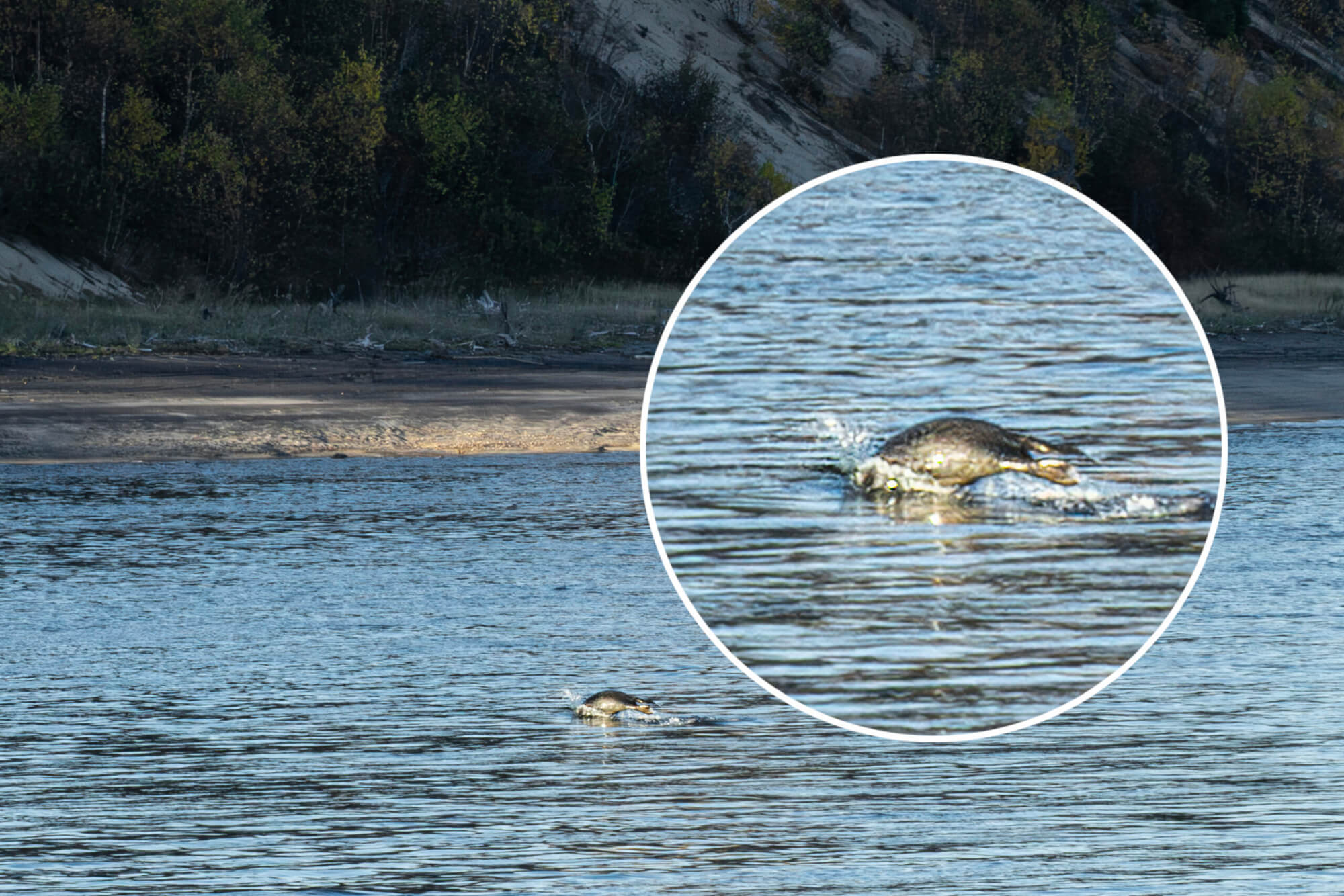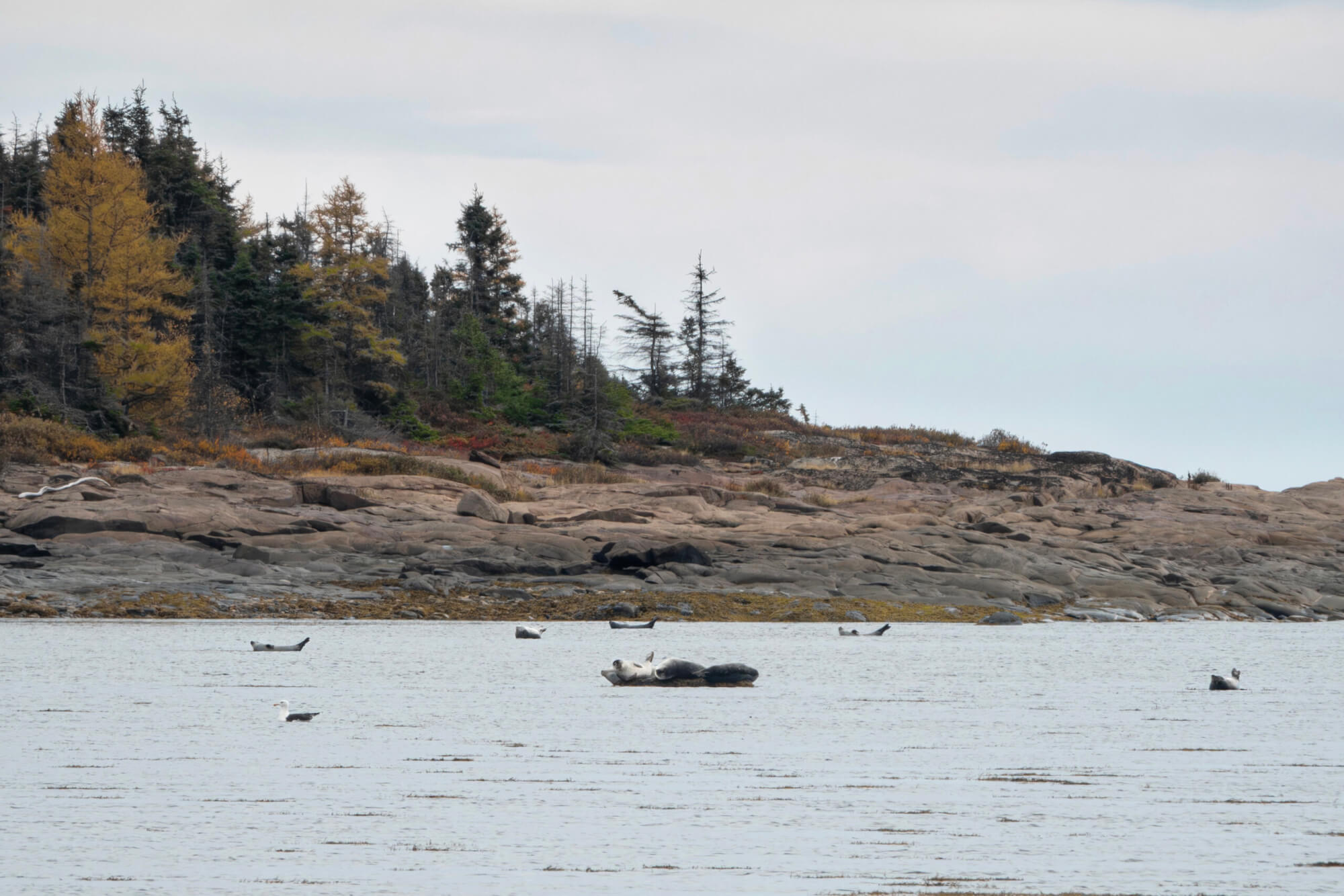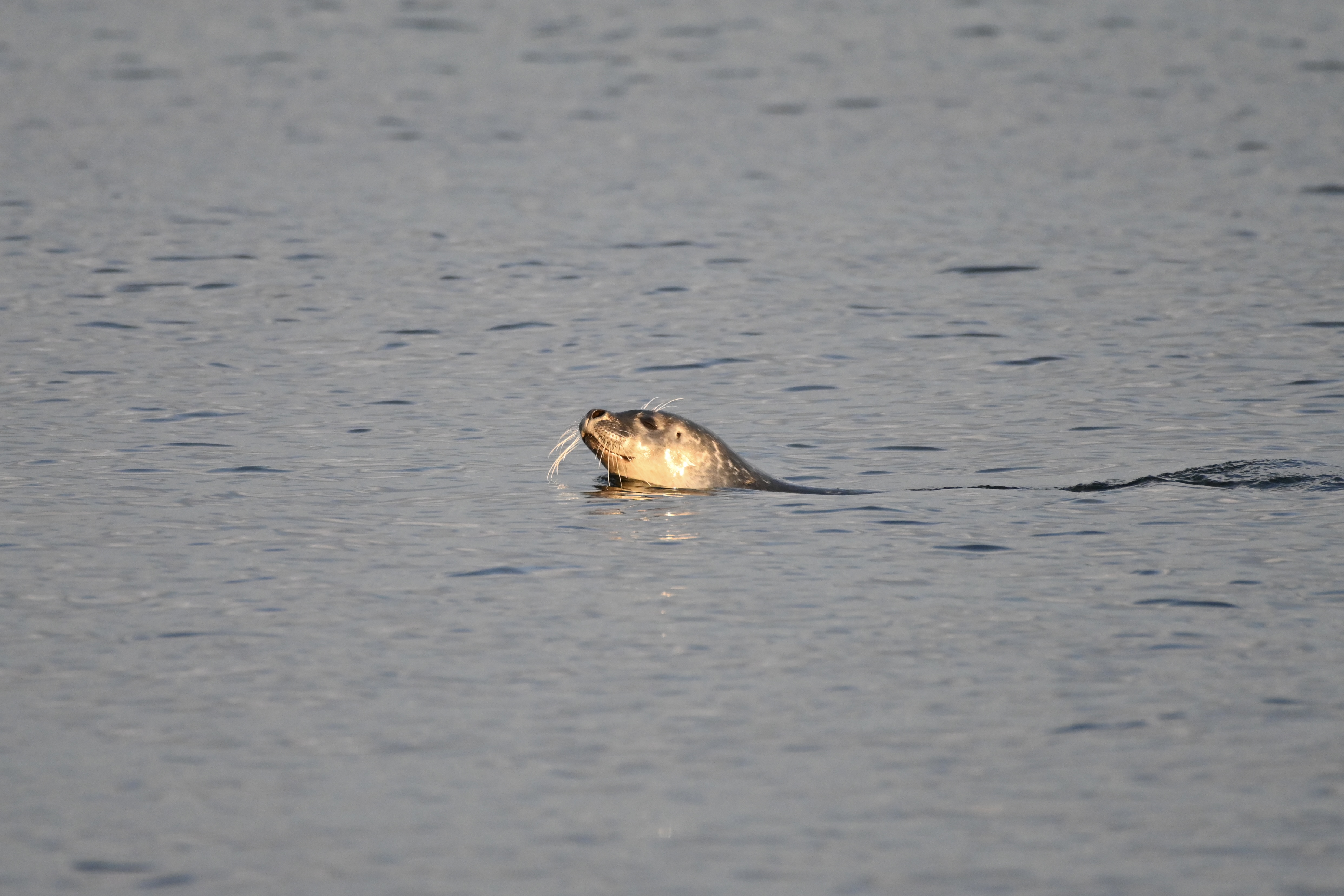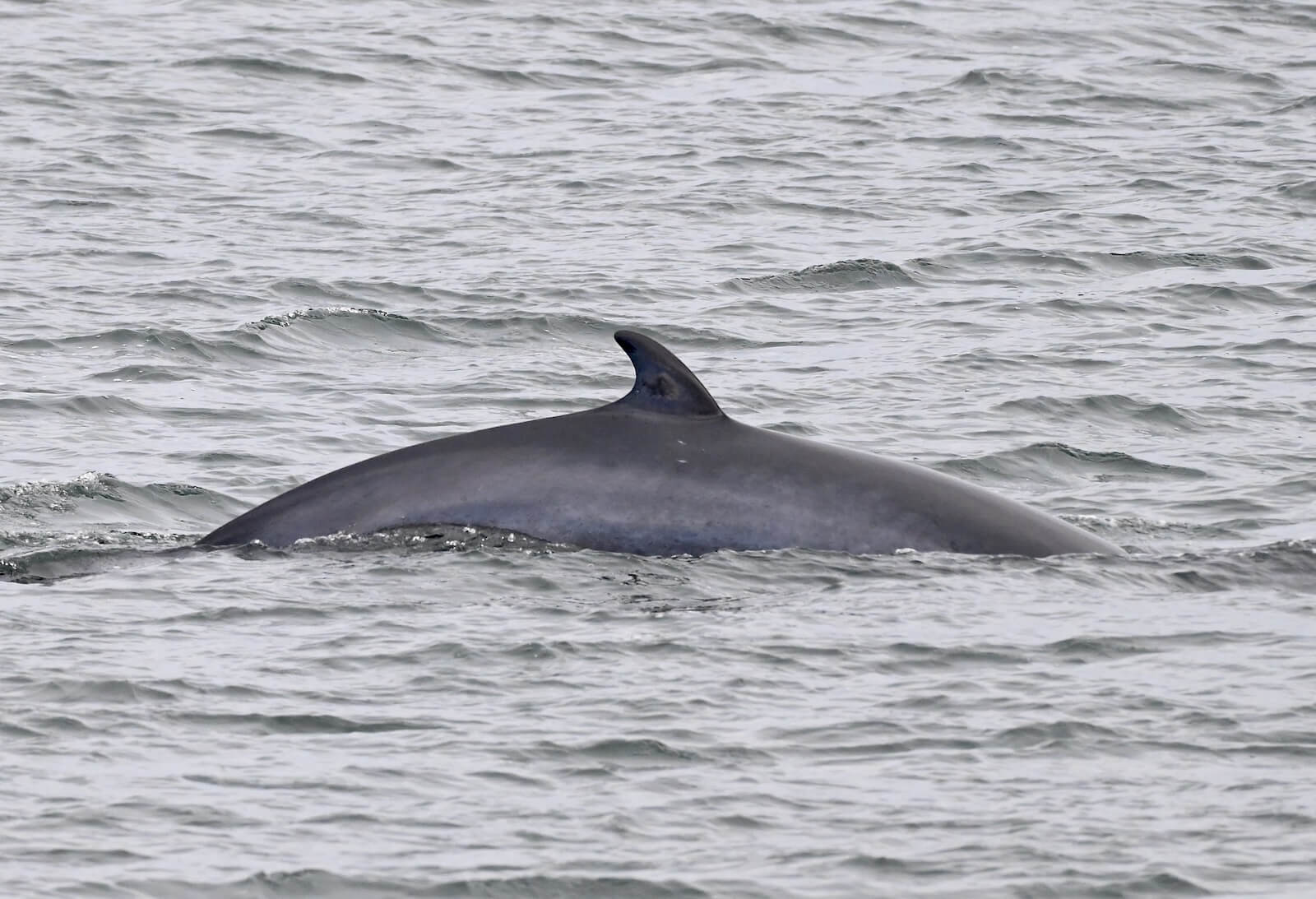Along the coasts or on the water, marine wildlife brings our senses alive. We observe the streamlined bodies of whales gliding in and out of the water, the whiskered faces of seals devouring fish, or even pelagic birds soaring in the skies. We listen to the powerful blows of large rorquals, or on calm days, the more timid vocalizations of harbour porpoises. We take deep inhalations of the salt spray while the smell of seaweed permeates the air. In Quebec, it is less common for people to be able to listen to marine mammals… and yet the underwater world is one that revolves around sound.
Belugas allegro
This week, I myself had the opportunity to listen to belugas vocalizing under water. The sizable herd was heading down the Saguenay Fjord toward the estuary. I could hear their whistles, clicks, squeaks, and grunts whenever the ferries stood idle. Appropriately nicknamed “canaries of the seas,” belugas possess a vast repertoire of sounds that could be the result of millennia of adaptations necessary for life near the ice floes, where ambient noise is omnipresent. To get an idea of the acoustic diversity of the St. Lawrence, listen to this excerpt published by the Saguenay–St. Lawrence Marine Park.
Fin whales adagio
In Tadoussac, three fin whales have been cruising the waters of the Marine Park for several days. Amidst a flock of Bonaparte’s gulls, an experienced nature photographer observes fin whale Bp959 as well as a few minke whales. The gulls’ raucous calls are interrupted only by the powerful blows of the fin whales, which echo against the rocky walls of the estuary before coming back down in a shower of glistening water vapour. According to the photographer, “The bird was quite surprised; it took a few moments to recover before it was able to carry on feeding!” With winter right around the corner, food is more important than ever! Time to stock up on reserves! Also swimming in the vicinity were Nova (Bp013) and Zipper (Bp097).
The most frequently recorded fin whale vocalizations are pulses with a frequency of approximately 20 Hz, which lies at the threshold of human hearing. These calls vary between 13 Hz and 40 Hz, while the intervals between them range from 6 to 37 seconds. These pulses are sometimes produced in repetitive sequences creating series that can last up to 32.5 hours, interrupted only by the breathing sequences of these marbled giants! It is believed that these songs are only sung by males!
A blue whale crescendo-decrescendo
In Les Bergeronnes, a whale enthusiast also spotted “from shore, extremely far offshore, a very stealthy blue whale!” A few days earlier, a nature lover observed “a blue whale near Pointe-à-la-Croix in Les Escoumins.” Was it B103 (Chameau), the famous blue that was observed that same week? After this year’s season marked by this giant of the sea—five of these large rorquals were seen in the Portneuf area one September day—their presence in the estuary seems to be fading. In music, a crescendo-to-decrescendo transition is called… swell and decay!
The sounds of these giants—which have frequencies as low as 15 to 40 Hz—are often below the audible threshold of our ears. To hear them better, scientists accelerate these frequencies to increase the pitch and compress time. The result is extraordinary sounds that give us the chills from head to toe. Their repertoire consists of pulses, grunts, moans, and wails. Not only do they represent some of the lowest sounds in the animal kingdom, the vocalizations of these cetaceans are also among the most intense! The underwater sound level of a vocalizing blue whale in Antarctica has been estimated at 189 dB, far more powerful than fireworks (140 dB) or a rocket launch pad (180 dB). Such a song could very well shatter our eardrums!
A grand slam fortissimo for Mériscope
On one exceptional outing between Portneuf-sur-Mer and Baie-des-Milles-Vaches, the scientific team encountered “porpoises, belugas, two minke whales, a humpback, three fin whales, and a blue whale”!
Humpbacks slancio
In the Gaspé Peninsula, a MICS collaborator observed three fin whales and no fewer than five humpback whales clustered together off the tip of the Gaspé Peninsula on Sunday, October 19, “including H692 a.k.a. Paloma, who has been present in this area on each of my outings since July 5. She really loves these waters and has spent the entire season there each of the past several years now.”
Lectures on acoustics were presented at the 4th Humpback Whale World Congress, which was held in Tadoussac last week. Did you know that humpback whale songs evolve as new ones emerge? This means that new arrivals to the species’ breeding grounds bring their own individual variations!
Minke whales presto
Throughout the estuary, the minke whale is once again gracing us with its presence. One regular observer reported 5 or 6 individuals in Baie-Comeau! The minke whale produces low-frequency sounds ranging from 80 to 200 Hz. According to one study, the species may use a series of higher-frequency clicks (7,500 Hz) that scientists describe as pings, straight out of a Star Wars movie. In the estuary, this small cetacean is less vocal than the fin whale. Have a listen here!
Dolphins and Seals stringendo
At Haldimand Beach at the tip of Cap Gaspé, a local woman reported about 50 grey seals hunting amongst the seabirds. Meanwhile, in Port-Cartier, one observer reported about 30 harbour seals! About 15 white-sided dolphins were also spotted by a whale-watching captain off the coast of Gaspé Bay.
Whether under water or on land, harbour seals make all kinds of noises, with frequencies ranging from 250 to 100,000 kHz. Underwater, they are called roars. Out of the water, they can emit “brief barks, tonal honks, grunts, growls, roars, moans, and pup contact calls,” explains the Ocean Conservation Research website. As for grey seals, sometimes referred to as a “sea wolves” by French speakers, they produce wolf-like howls as well as grunts and moans. A percussionist in its spare time, the grey seal sometimes claps its flippers together to produce a resonating underwater applause!
The next time you find yourself along the St. Lawrence, or on its waters, La prochaine fois que vous vous retrouverez au bord du Saint-Laurent, ou même sur ses eaux, listen carefully, and who knows, maybe you’ll hear the song of the sea!
To learn more:
Where are the whales this week? Observation map
These data were reported by our network of observers. They give an idea of the presence of whales and in no way represent the actual distribution of whales in the St. Lawrence. Just for fun!
Click on the whale or seal icons to discover the species, the number of individuals, additional information or photos of the sighting. To enlarge the map, click on the icon in the top right-hand corner.
The map works well on Chrome and Firefox, but not so well on Safari. To display the list of sightings, click on the icon in the top left-hand corner.
Thanks to all our collaborators!
Special thanks go out to all our observers who share their love for marine mammals with us. Your encounters with cetaceans and pinnipeds are always a pleasure to read and discover.
On the water or from shore, it is your eyes that give life to this column.
- Marie-Andrée Charlebois
- Laeticia Desbordes
- Hélène Guitton
- Jade-Audrey Lavergne
- Audrey Leblanc
- Mathieu Marzelière
- Pascal Pitre
- Renaud Pintiaux
- Diane Ostiguy
- René Roy
- Guillaume Savard
- Christine Stadelmann
- Laurence Sylvain
- Guy Synnott
- Laurence Tremblay
- Marielle Vanasse
And all the others!
Additionally, we would like to acknowledge the following teams that also share their sightings:
Centre d’éducation et de recherche de Sept-Îles (CERSI)
Station de recherche des Îles Mingan (MICS)
Réseau d’observation des mammifères marins (ROMM)
Réseau québécois d’urgence pour les mammifères marins (RQUMM)
Groupe de recherche et d’éducation sur les mammifères marins (GREMM)
Mériscope
Would you also like to share your observations?
Have you seen any marine mammals in the St. Lawrence? Whether it’s a spout offshore or just a couple of seals, drop us a line and send your photos to [email protected]!


